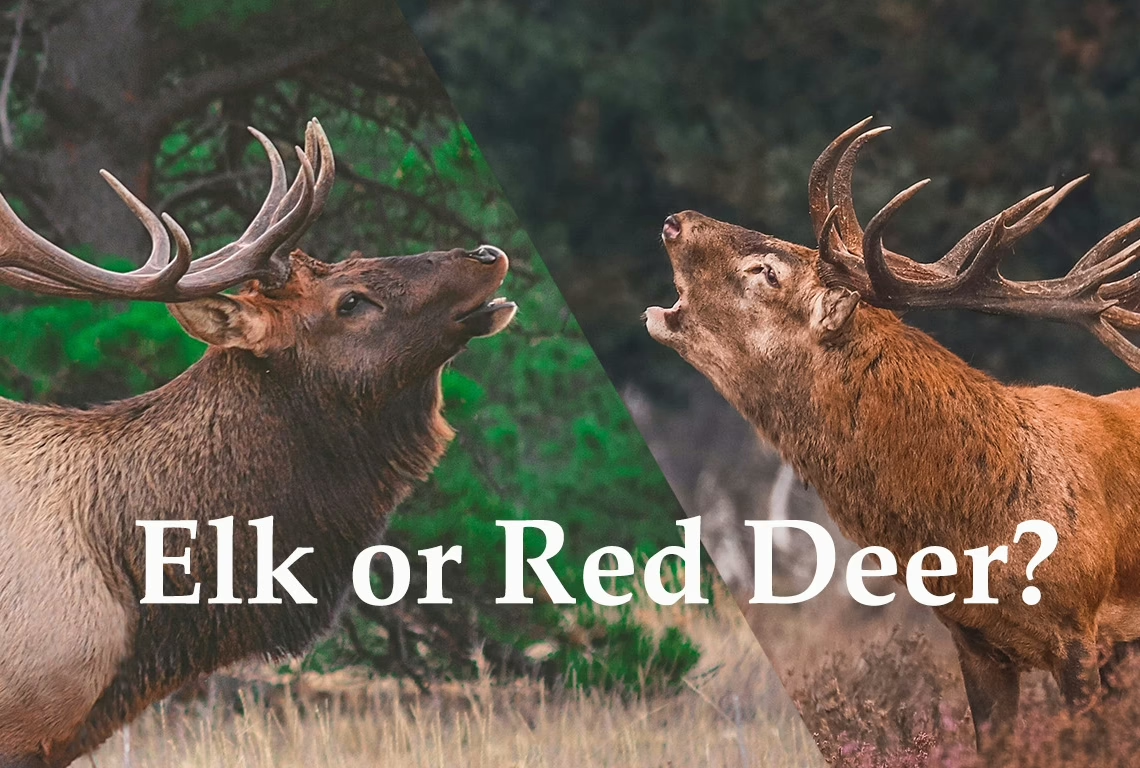Explore the key physical, behavioral, and habitat differences between red deer and elk to better understand these iconic cervids and show your friends how smart you are.
For hunters and wildlife lovers alike, distinguishing between red deer and elk can be tricky because these woodland beasts share many similarities. However, they are distinct species with unique characteristics. Plus, there are entire continents that only have one or the other, so don’t go to Wyoming and call elk red deer. This guide breaks down the differences in size, appearance, behavior, and bugle.
Habitat and Distribution
Let’s take the most obvious difference first. Red deer are primarily native to Europe, parts of Asia, and introduced populations in places like Argentina and New Zealand. Elk (also called wapiti) are mostly found in North America and parts of eastern Asia. While their habitats sometimes overlap in rugged mountain forests, elk prefer larger open forested areas and mountainous terrain. Red deer can also thrive in more varied European landscapes.

Quick quiz: Is this an elk or a red deer. Answer: It’s a big old wild, Wyoming elk. Let Randy Newberg (the guy in the back) teach you how to hunt elk on your own in the West.
Physical Size and Appearance
Another notable distinction between red deer and elk is their size. Bull elk are significantly larger, often weighing between 700 to 1,100 pounds. Red stags (male red deer) generally weigh between 350 to 600 pounds. Red deer tend to be closer in size to whitetail and mule deer species, while elk are among the largest members of the deer family (Cervidae). Coloration also helps tell them apart. Elk usually have a lighter brown body with a darker neck and head area, including a pale rump patch, while red deer have a consistent reddish-brown coat year-round, darkening in winter.
Antler Structure Differences
Who doesn’t love antlers, especially on elk? Elk antlers are large, sweeping, and slender, often extending back and outward in an elegant curve. Red deer antlers are known for their crown-like formation at the tips, giving a distinctive symmetrical look. To make matters even more complicated, Roosevelt’s elk in the Pacific Northwest sport crowned antlers, yet they are most definitely not red deer.
Red Deer Roar and Elk Bugle
Antlers are awesome, but the screams of a rutting bull elk embodies the awe and, sometimes, downright creepiness of being alone in the backcountry. Red deer and elk diverge, especially during mating season. Red stags are famous for their guttural roar during the rut, which can carry long distances. I’m biased, but the roar of a red deer sounds like a cow getting a colonoscopy, sans anesthesia. In contrast, bull elk produce a high-pitched bugling call, one of the most iconic sounds of North American wilderness.
Listen to An Elk Bugle and a Red Deer Roar
Red deer and Elk Similarities
Even with all that you just read, don’t be sad if you still can’t tell them apart. To be fair, they are somewhat similar to the untrained eye. Both species belong to the genus Cervus and inhabit similar environments, such as forests and open meadows. They are social animals, often forming large herds, and during the rut (mating season), dominant males gather harems of females (cows). Their diets overlap as they primarily graze on grasses, herbs, and low-hanging leaves. Both species exhibit impressive annual antler growth in males, which they shed and regrow each year. Vocalizations play a significant role in their mating behaviors as well, with red deer males producing a deep guttural roar and elk bulls emitting a distinctive high-pitched bugle. Despite being separate species, these shared behaviors and biological traits highlight their close evolutionary connection.







